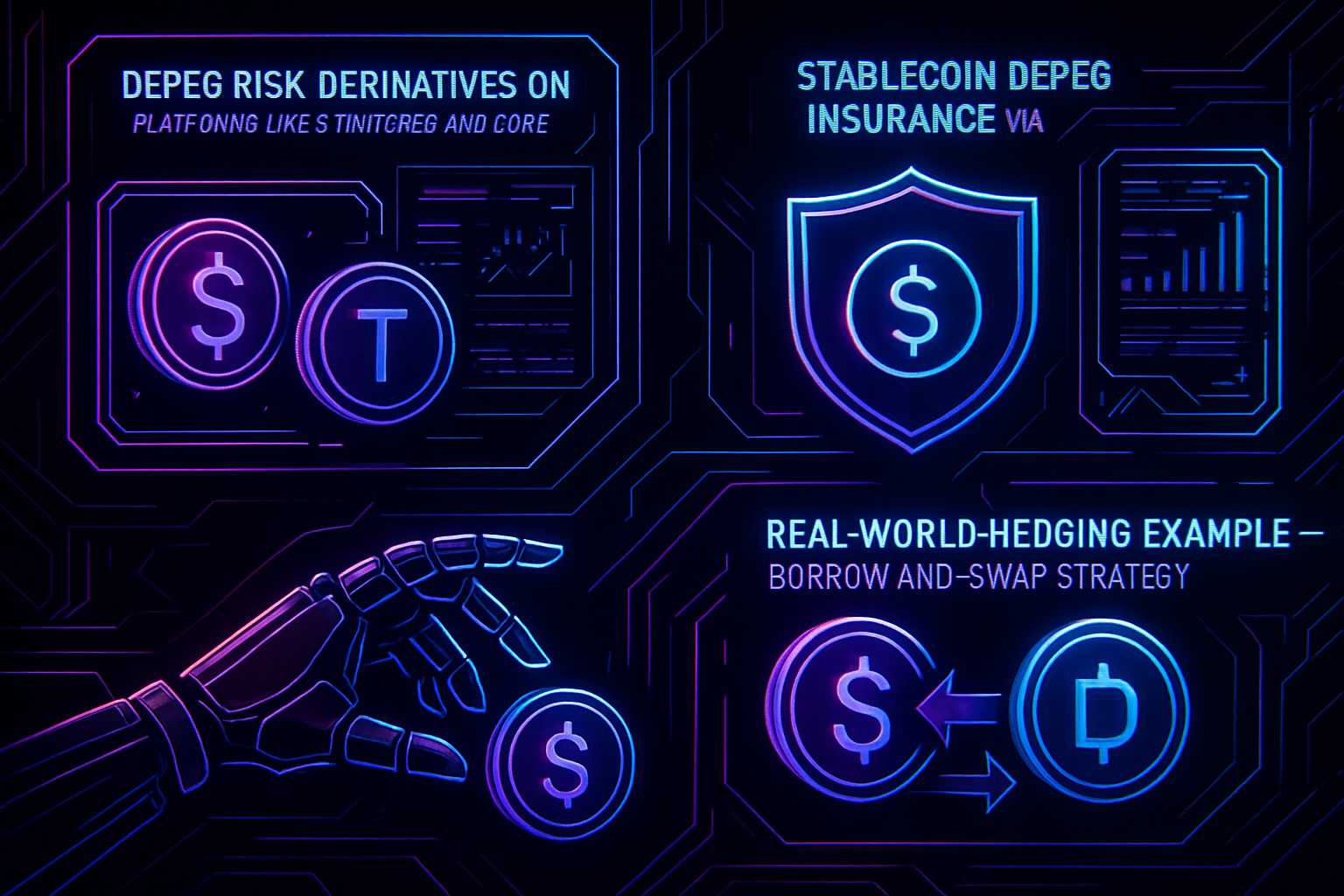
The USDC depeg event of March 2023 stands as a watershed moment in stablecoin and DeFi risk management. When Circle disclosed that $3.3 billion of USDC’s reserves were trapped at the failing Silicon Valley Bank (SVB), the market responded with brutal efficiency: USDC plummeted to $0.87, far below its intended $1.00 peg. This single event triggered a cascade of volatility across decentralized finance, affecting protocols, users, and even other stablecoins reliant on USDC as collateral. For investors and protocol architects alike, the episode spotlighted the urgent need for robust risk controls tailored to crypto’s unique blend of transparency and counterparty exposure.

USDC’s Depeg: Anatomy of a Stablecoin Shock
Unlike previous stablecoin failures such as Terra/LUNA, which were rooted in algorithmic design flaws, the USDC depeg was triggered by traditional finance risks bleeding into crypto markets. Circle’s reliance on SVB for a significant chunk of its reserves created a single point of failure; once SVB collapsed, questions about reserve accessibility and solvency led to rapid redemptions and price dislocation.
This event forced DeFi builders and risk managers to confront uncomfortable truths about custodial concentration, collateral dependencies, and crisis communication protocols. The following three lessons are not theoretical, they are drawn directly from the mechanics and aftermath of this real-world stress test.
Three Key Lessons for DeFi Risk Management
Three Key Lessons from the 2023 USDC Depeg
-

Diversify Stablecoin and Custodial Risk Exposure: The USDC depeg revealed the danger of concentrating reserves in a single institution. Circle’s $3.3 billion exposure to Silicon Valley Bank led to USDC dropping to $0.87. Following the event, Circle diversified its banking partners, including Bank of New York Mellon and Cross River, to mitigate similar risks in the future.
-

Implement Real-Time On-Chain Monitoring and Automated Risk Controls: Rapid market reactions during the depeg highlighted the need for robust, real-time monitoring of reserve status and automated risk management. DeFi protocols and stablecoin issuers should deploy on-chain analytics and automated triggers to respond instantly to anomalies, reducing the impact of sudden market shocks.
-

Prioritize Transparent Communication During Crisis Events: The USDC incident demonstrated that open, timely communication is critical in maintaining market confidence. While Circle’s transparency prompted swift market reactions, clear updates helped stabilize sentiment. Crisis communication plans should prioritize factual, frequent updates to stakeholders across all channels.
Diversify Stablecoin and Custodial Risk Exposure
Perhaps the most glaring vulnerability exposed by the USDC depeg was concentration risk. With $3.3 billion, over 8% of total reserves, locked in SVB at the time of its collapse, Circle’s overreliance on a single banking partner became an existential threat not just to USDC holders but also to any DeFi protocol using USDC as core collateral.
The solution is clear: diversification across multiple banking partners and custodians is non-negotiable for any stablecoin issuer or protocol treasurer seeking resilience against black swan events in TradFi. Since March 2023, Circle has expanded its banking network to include institutions like Bank of New York Mellon and Cross River, a direct response to this lesson (source). For DeFi protocols and DAOs managing treasuries or collateral baskets, regularly rebalancing between multiple stablecoins (e. g. , splitting exposure among USDC, DAI, Tether) can further reduce systemic contagion during periods of stress (source).
Implement Real-Time On-Chain Monitoring and Automated Risk Controls
The speed at which information, and panic, spread during the SVB/USDC crisis underscored another critical need: real-time on-chain analytics coupled with automated risk mitigation tools. Protocols that relied solely on periodic manual monitoring found themselves outpaced by market events; liquidity dried up quickly as arbitrageurs exploited price discrepancies across centralized exchanges (CEXs) and decentralized exchanges (DEXs).
Automated risk management systems, such as circuit breakers that pause certain smart contract functions when off-peg thresholds are breached or dynamic collateral requirements that adjust based on real-time oracle data, could have limited damage propagation within major lending platforms like MakerDAO or Aave (source). The case study highlights how integrating robust monitoring dashboards with pre-programmed contingency actions is now table stakes for any protocol with meaningful stablecoin exposure.
For DeFi users and protocol builders, the lesson is to invest in infrastructure that enables immediate visibility into on-chain positions, collateral health, and liquidity flows. This includes leveraging open-source analytics tools, integrating redundant oracles, and designing automated responses, such as temporarily suspending redemptions or rebalancing collateral, when market signals indicate a depeg risk. Ultimately, speed and automation are not luxuries in crisis, they are necessities for survival.
Prioritize Transparent Communication During Crisis Events
While technical controls are vital, the USDC depeg also revealed the importance of clear, timely communication with the market. Circle’s rapid disclosure about its SVB exposure was a double-edged sword: it provided transparency but also accelerated panic-driven redemptions and price volatility. In contrast, stablecoins like Tether (USDT), which were less forthcoming with reserve details during the same window, did not experience similar levels of volatility (source).
The key takeaway is not to reduce transparency but to pair it with strategic messaging and real-time updates that help anchor user expectations. Protocol teams must prepare crisis communication playbooks ahead of time, detailing who communicates what information, through which channels, and at what cadence, to avoid contradictory signals or information gaps that can worsen market stress.
Integrating Lessons: Building Resilient DeFi Systems
The 2023 USDC depeg event catalyzed a new era in DeFi risk management thinking. Diversifying both stablecoin holdings and custodial relationships is now standard operating procedure for treasurers; real-time monitoring infrastructure has become an industry baseline; and transparent yet measured communication is recognized as a core pillar of trust.
For investors seeking to hedge against future depegs or systemic shocks, these lessons translate directly into actionable strategies: spread exposure across multiple stablecoins and custody providers; demand that protocols you use have visible on-chain monitoring dashboards and automated circuit breakers; and favor teams with proven crisis communication records.
The next generation of DeFi protocols will be those that treat risk management not as an afterthought but as an embedded feature, automated where possible, transparent by default, and diversified at every level. As markets evolve faster than ever before, these principles are critical not just for survival but for sustainable growth within digital asset ecosystems.



